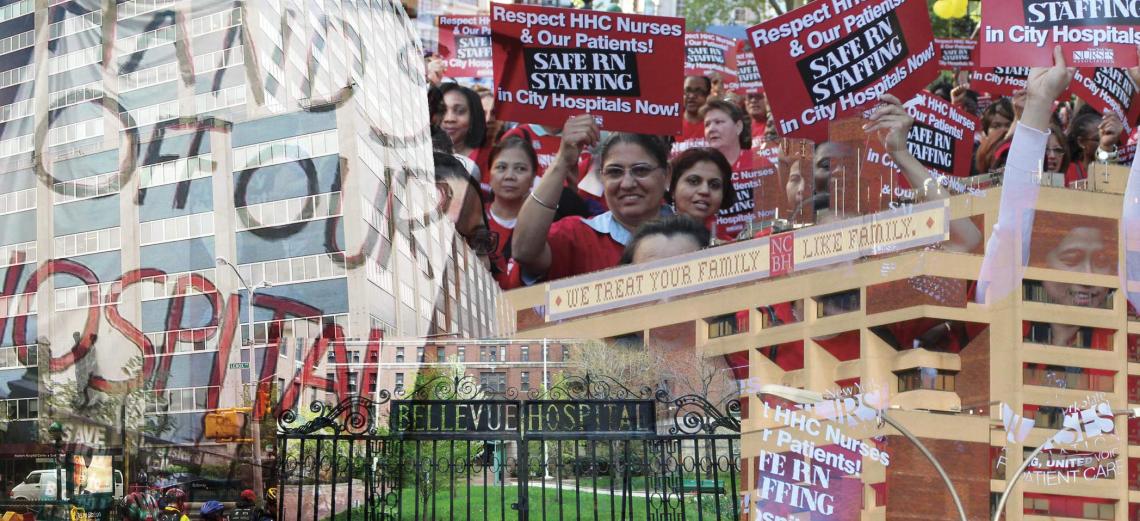Labor united for quality public healthcare: Healthcare as it should be

It’s time to turn the fight to defend public healthcare into a movement to expand it. And in December, NYSNA began to build that movement.
The New York City Health and Hospitals Corporation (HHC) is the largest public healthcare system in the country. It’s what healthcare should be: quality care available to everyone, regardless of ability to pay.
But public healthcare in New York City is at risk of being undercut.
NYSNA has developed a program to put it on sure footing, and we have united with the other unions in the Municipal Labor Committee that represent workers at HHC – including 1199, AFSCME District Council 37 and several of its locals, Committee of Interns and Residents, Doctors Council, Organization of Staff Analysts, and CWA Local 1180 – to advocate for the changes it will take to make sure HHC remains the model for quality healthcare for all that it can, should, and must be.
Mayor de Blasio reiterated his commitment to preserving and expanding healthcare in every neighborhood when he announced his choice to head HHC, Dr. Ramanathan Raju. We are prepared to work with Dr. Raju to enhance HHC. The program that NYSNA’s HHC/Mayorals Executive Council and the HHC unions in the Municipal Labor Committee passed in December provides the city with the blueprint to keep its commitment.
Principles for HHC
1. Maintain and expand existing HHC services to address unmet healthcare needs in every community so that no part of New York City is a healthcare desert.
2. Reverse the privatization of services at HHC facilities.
3. Create democratic local planning bodies empowered to assess community health needs, to develop plans to meet those needs, and to allocate healthcare resources accordingly.
4. Establish hospital cooperatives to plan and coordinate healthcare delivery based on community needs, ensuring that need drives decision-making, not the quest for profit.
5. Provide adequate funding and reimbursement rates to HHC and other safety-net hospitals
to fully cover the costs of treating Medicaid, Medicare, and uninsured patients.
6. Expand the network of public hospitals and other health services to meet community needs and to preserve and improve the quality of patient care at HHC facilities.
7. Promote mandatory, statutory minimum staffing levels in all healthcare settings – and implement safe staffing ratios now for nurses, doctors, LPNs, aides, and other patient-care staff.
8. Create a more democratic and representative corporate structure that includes more patients, advocates, and direct-care staff on the HHC board – and establish decision-making processes that ensure that caregivers have direct power over the design and organization of patient-care programs.
9. Expand the role, powers, and function of community advisory boards to make them more effective watchdogs of local facilities.
10. Remove unnecessary layers of managerial bureaucracy and other overhead costs, allowing greater resources to be directed to patient care.